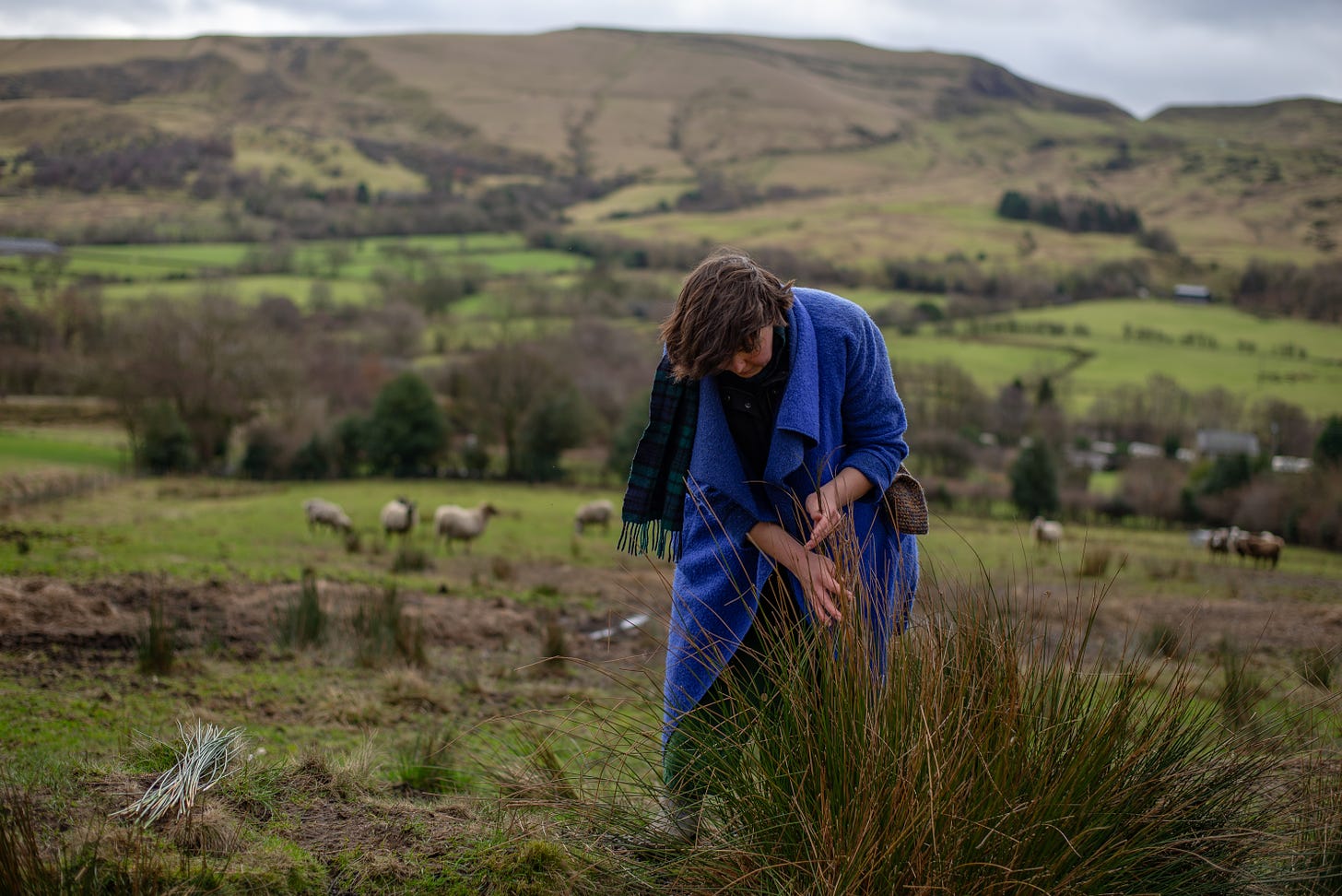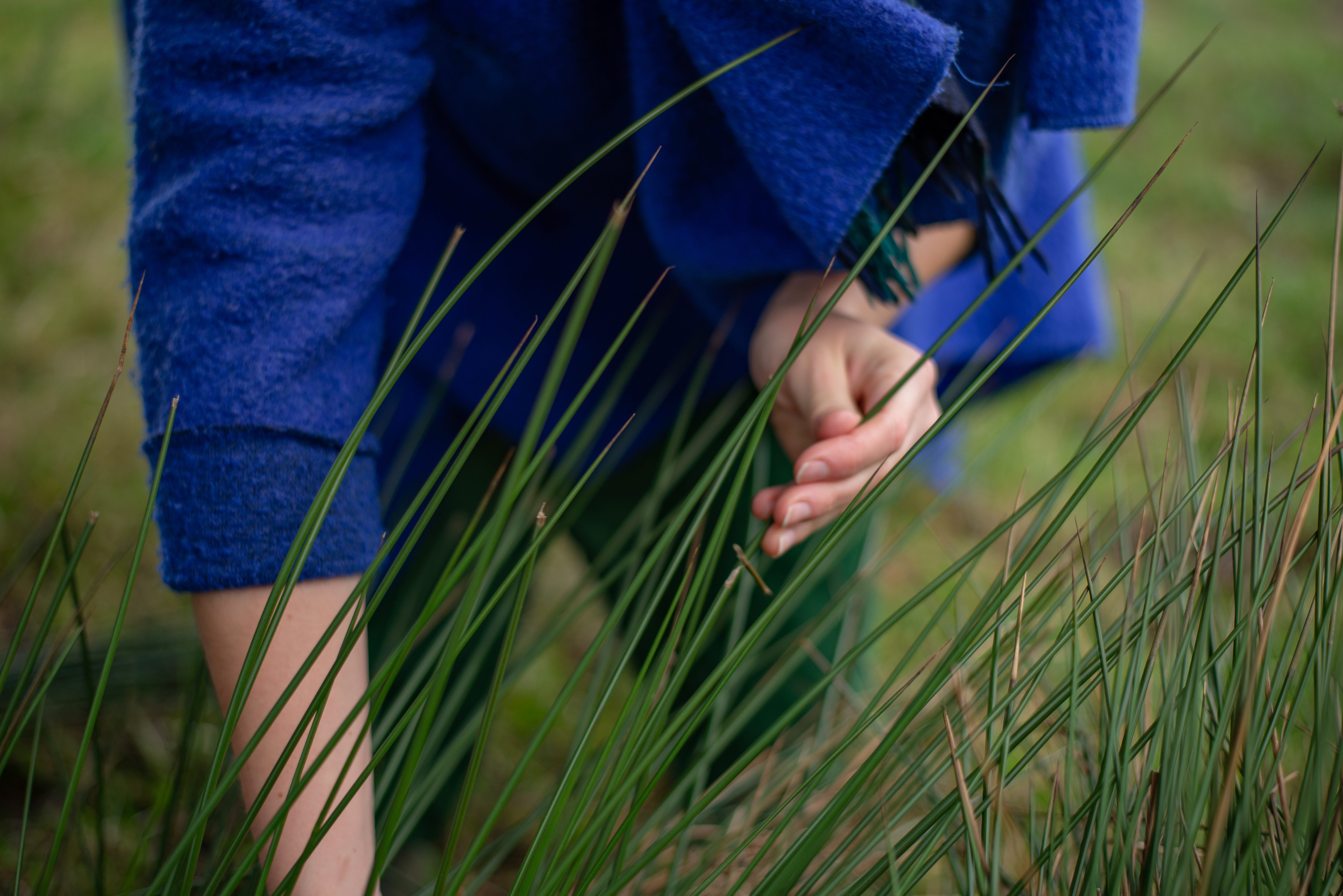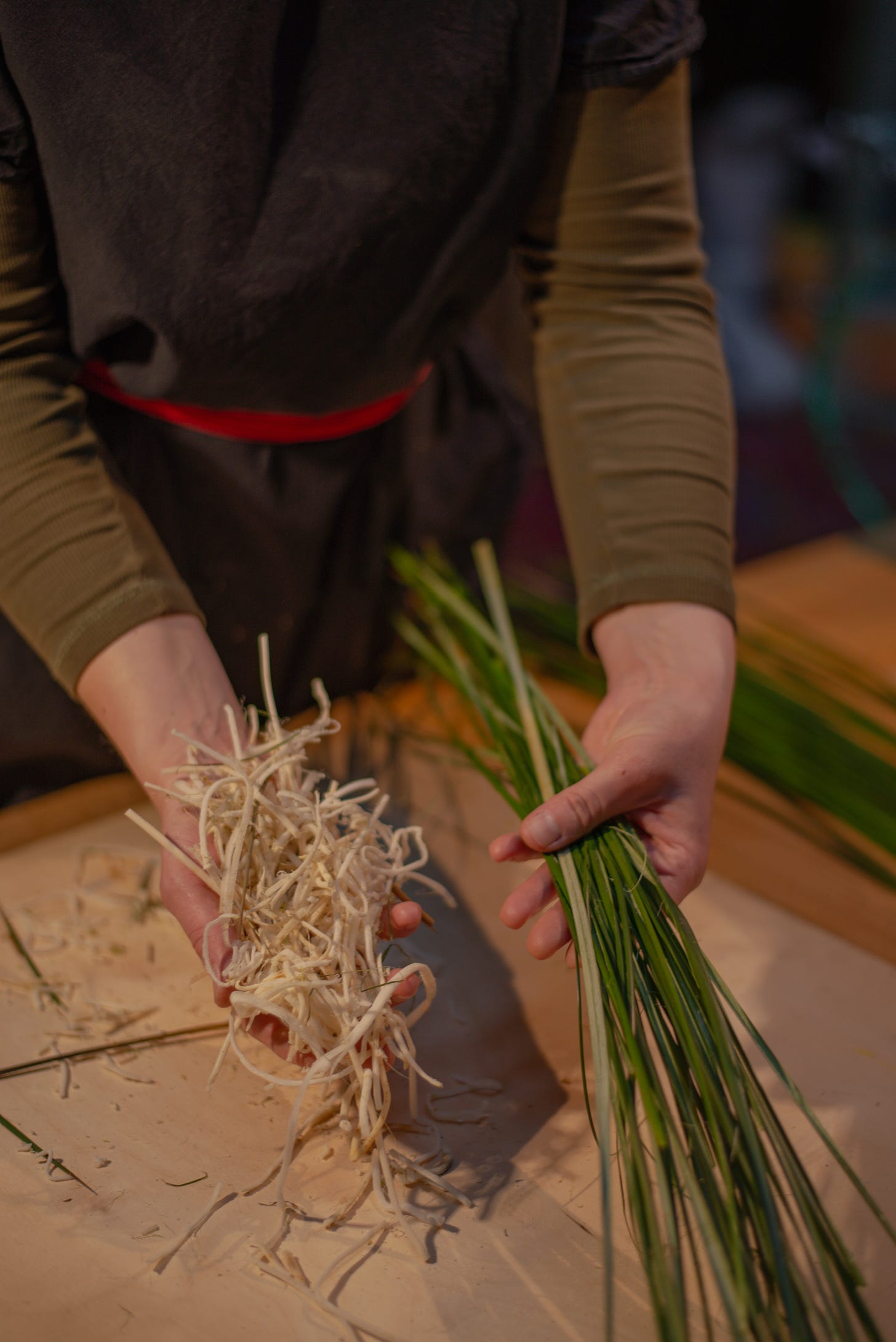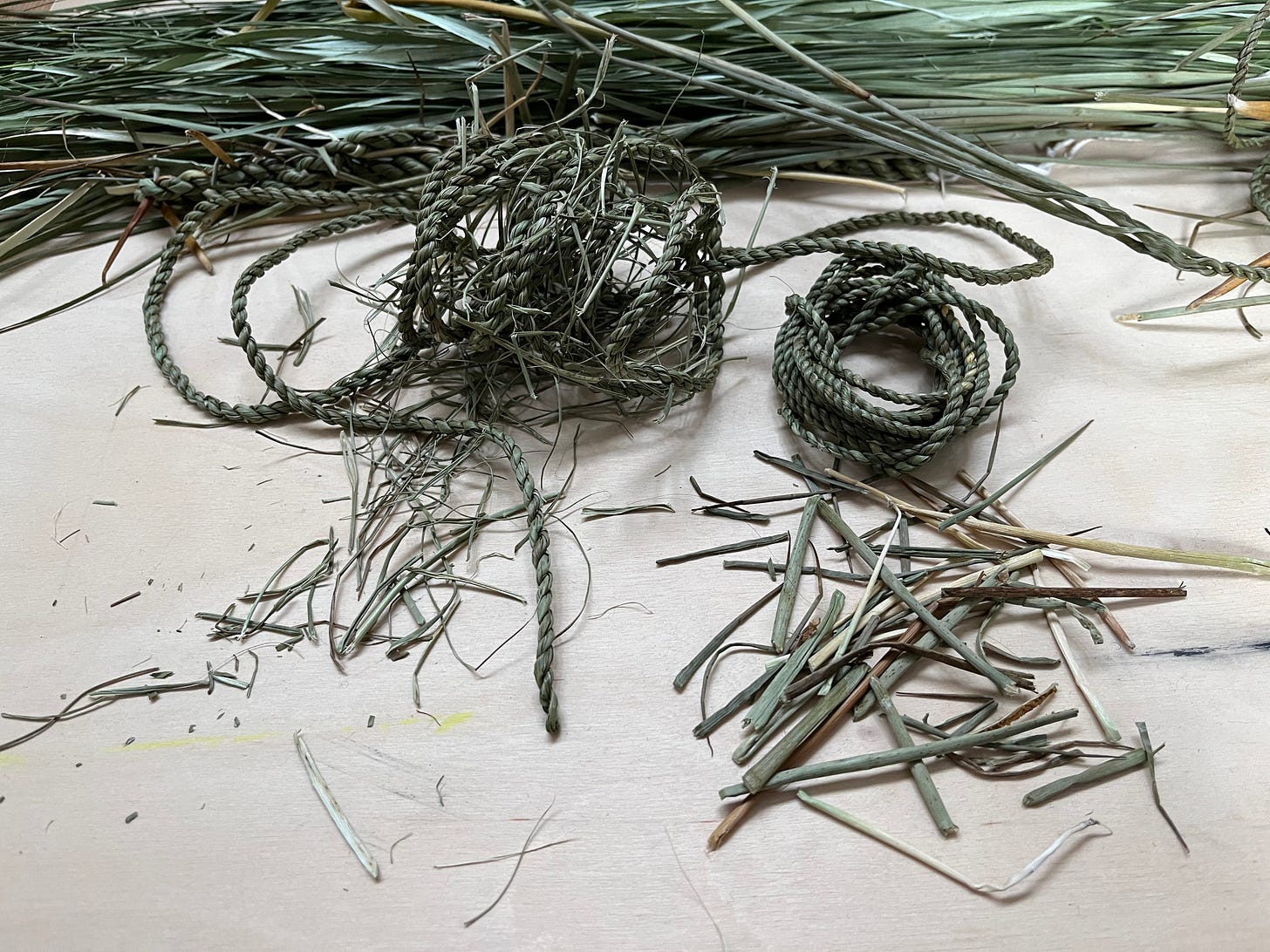welcome to this first issue of my new long-format newsletter. as the title suggests, I intend to focus here on (mostly) wild growing plant fibres I forage from the landscape around me that I turn into cordage. I will talk about common rush today (also known as hard rush which has a close relative: the soft rush I will tell you more about another time). so, each week, from now on, I endeavour to highlight a different specie of plant I forage that you can learn about and forage, too, responsibly. this publication accompanies the Foraging String Club, a creative programme I am hosting this year. I do hope the content here will also be useful to those of you who are not participating in that, but keen to learn about plant fibres you can forage and use on your own creative journey.
I am looking forward to sharing here with you what I’ve learnt over the past 5 years about plant fibres and excited to continue connecting deeper with what I know, as I go.
What are rushes? Where do I find and how do I gather them sustainably? What do I use the rushes for? What happens next? How do I process hard rush into cordage? Do they need drying? Do they need soaking?
I’m writing to you from the Hope Valley in the Peak District, UK, where I’ve recently arrived to live and work. I began gathering rushes on my daily walks from the fields and hills around me since the 1st of February. Spring is just arriving now. It is an auspicious moment of emerging past the Spring Equinox and budbreak. The landscape is now rapidly greening and unfurling.
let’s get started.
What are rushes?
they are native plants in the Northern Hemisphere. many different species of rushes are widely used in fibre works, basketry, matting, thatching, furniture making and ropemaking. ususally the stems are dried, split or used whole. rush was traditionally the material used to make ropes for tying straw, dock and heather baskets together, the kind that women seem to have in old photos to carry peat or potatoes.


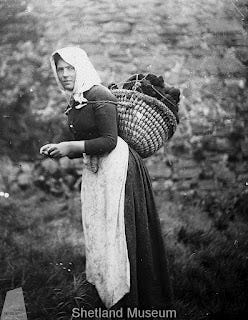
Where do I find common rush?
in my experience, rushes always grow in water’s edges, such a streams, rivers, lakes or are found in clusters on sloping wet grounds. some other species of rush even grow in water, too. I mostly collect mine from alongside streams flowing across the peaks and fields. sometimes standing in the mud with my two feet planted apart on the two sides, the water gently flowing beneath me while I gather the long green stems that are bending over the stream, touching the water with their spikes.
rushes also provide useful ecological functions where they grow in wild abundance. I have seen birds eat the flower seeds in later seasons and insects move into the soft, spongy inner core of the rush stems. Another example I’ve witnessed and read about is how on sloping ground with wet soil rushes may be important in binding the surface soil and thereby helping to prevent some erosion.
rushes are rooted beings.
How do I identify them?
hard rushes are the bright green shiny waxy stems that freshly spring up in abundant clusters on muddy fields or near water. they each end in sharp points. not as sharp or hard as bramble thorns or the needle points of holly leaves. common rush will not pierce when your skin comes into contact with its spikes. they have friendly, soft spikes when fresh green. you can test this by touching them with your finger tips. they are slightly harder when they turn brown and dry. this time of the year you will find the brownish dry clusters of rush from the previous year (some with leftover flower/seed heads from yesteryear towards their spiky tops), and in amongst them the bright green fresh new shoots.
these are the ones I’m gathering as you can see in the photos below. this time of the year they have not gone into flowers yet. when they do, I normally leave them to blossom and go into seen. I tend not to collect any more until later times of the year.
when you spend time observing plants you forage you will notice how they change throughout the year, each having their own seasonal cycles. just like grapes or apples, there is an optimal time to pick fruits when they are ripe, there is also an optimal time to collect each plant for the purposes of cordage making, when their fibres are ripe = ready for harvest.
I gather hard rushes in late winter and early spring in the UK.
go and check whether you can find some somewhere near you.
How and where do I gather them sustainably?
by hand, slowly, one by one.
bending down or kneeling to reach with my fingertips to the base of the stem as far down as my fingers can dare to approach the soil. I pull hard. sometimes I find they are very stubborn and they won’t budge, as if they didn’t want to let go. I keep searching until I find the ones that are willing to be taken by my hands. at the base of each stem is enveloped tighly by small light brown leaves that you can pluck them out of (they sound as if removing something from a tight sheath). sometimes you can also tear them, bend and break them as you pull. I try to avoid this by pulling firm and slow. you can find a good rhythm if you are patient, listening to the plants and how they wish to be handled.
less forcing and more listening.
the only tools you need for foraging hard rushes are your two bare hands.
notice how they feel to the touch. notice how they smell.
foraging is a slow practice that can open your senses.
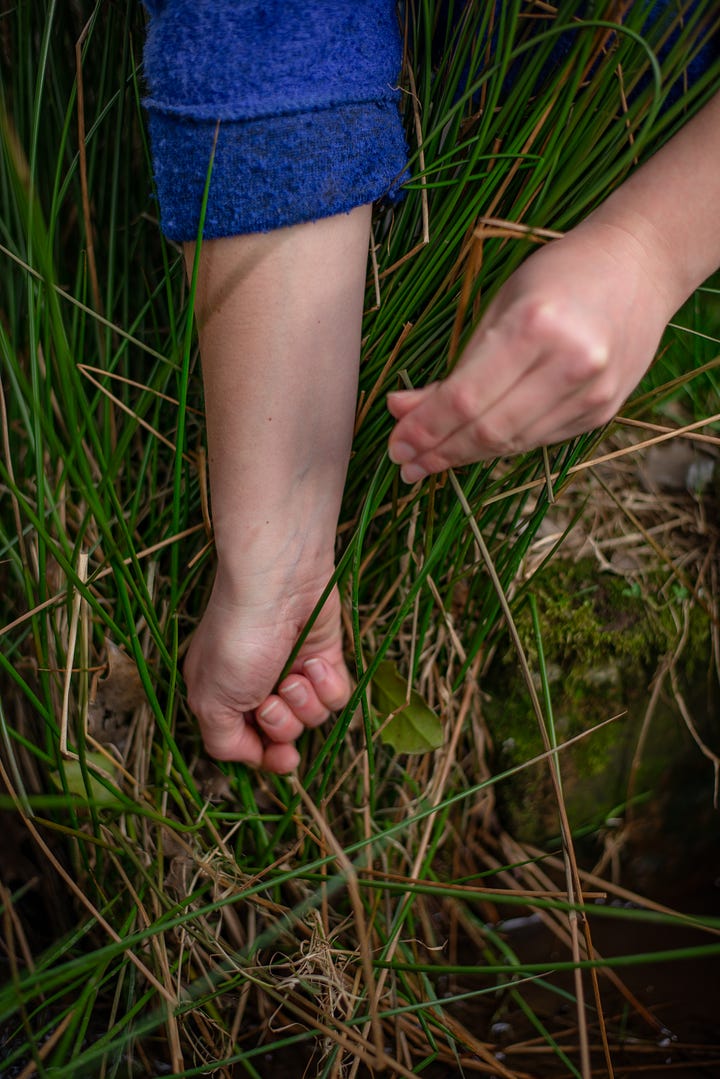
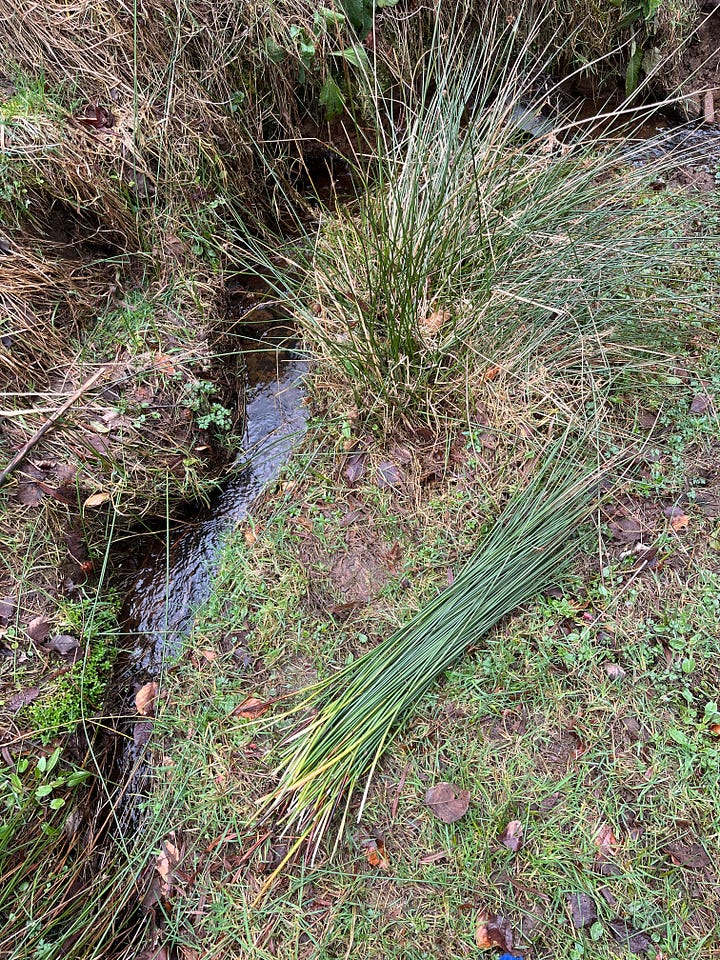
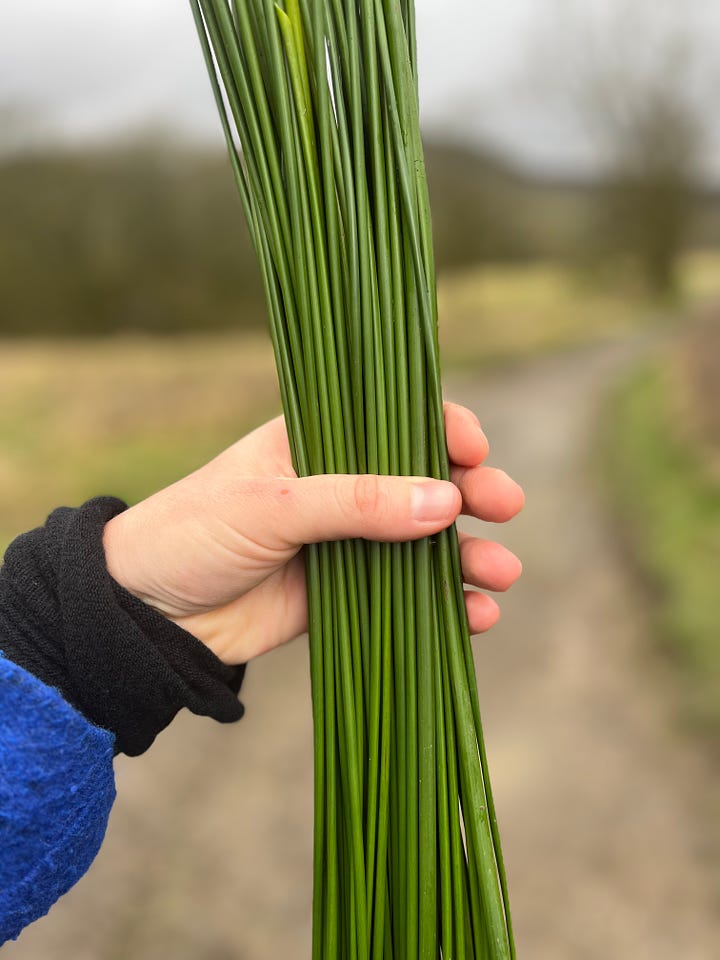
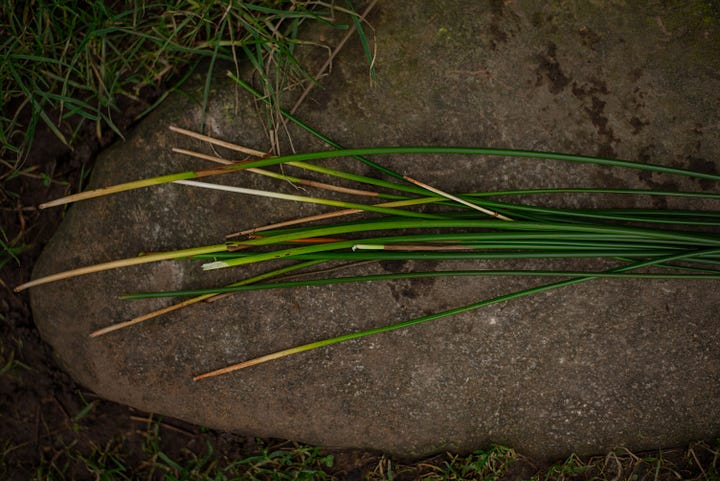
How much do I need? What is the amount I can forage at once?
pick only a handful at any given time. take only what you need and you can carry in your hands. never take more than half of any cluster of rushes you pick from. always leave some for others. other living species of our more-than-human world may depend on them for their survival. bear this in mind when you forage, who else may nest in amongst the rushes you are gathering from, who might eat their seeds or shelter in their stems. develop your awareness by connecting to this plant and invite your imagination to consider what other living beings may be connected to it, too.
What happens next?
the part when we bring the outside in.
we begin to refine our chosen material from plant to fibre.
How do I process the foraged plant material into cordage?
I dry and then rehydrate plant fibres, almost always.
plant fibres shrink, some of them 80-90% and thus if you make cordage from the freshly harvested plants, you will have a loose DNA chain looking piece of string in a few days after twisting. whereas, if you let the plants you carefully gathered dry out in a well-ventilated warm and dry sheltered space and then rehydrate them later before making cordage from them, you will have a more homogenous fibre quality and it will only shrink a little as your cordage dries.
each plant I gather has a different drying time and rehydrating time. there are different methods for both, each has to suit the plant you are dealing with. also, the technique for processing the fibres of your foraged plant material vary, depending on which plant you are working with. the methods and technique I describe below is one of the many. I have heard about and seen other basketweavers and fibre workers using entirely different ways to process rush fibres.
I would encourage you to begin with one and see how well you get on with it. if it doesn’t suit your hands or your needs, try out a different one and keep observing how best you can participate in this process of refining the fibres.
be open to learn and discover the ways that agrees the most with you.


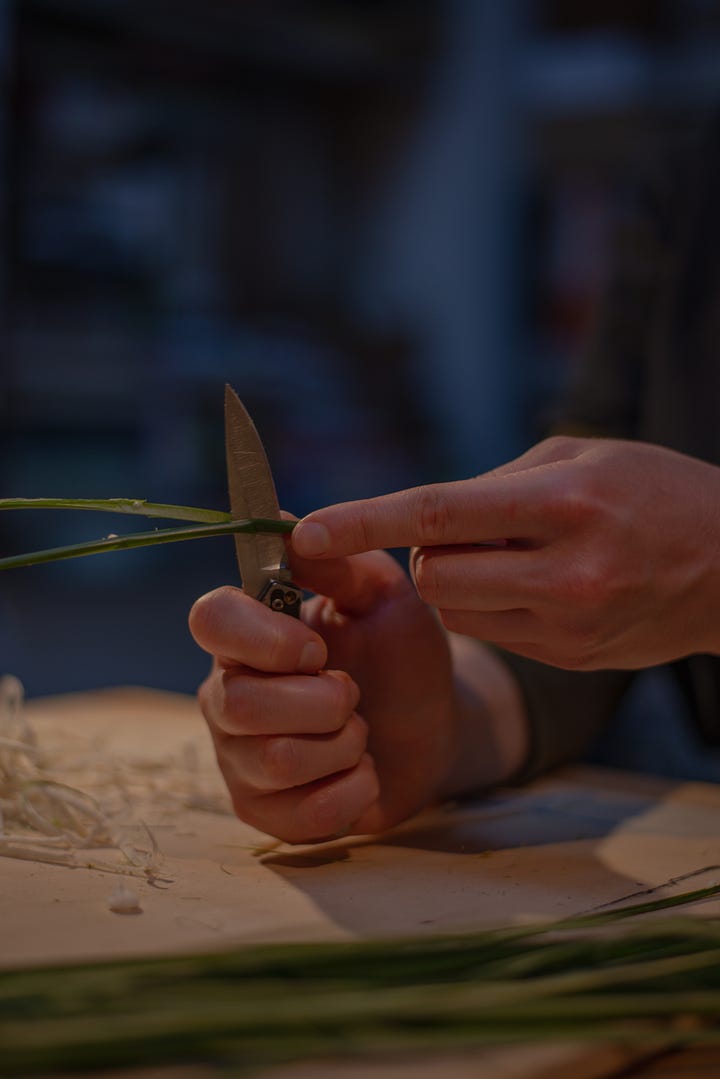
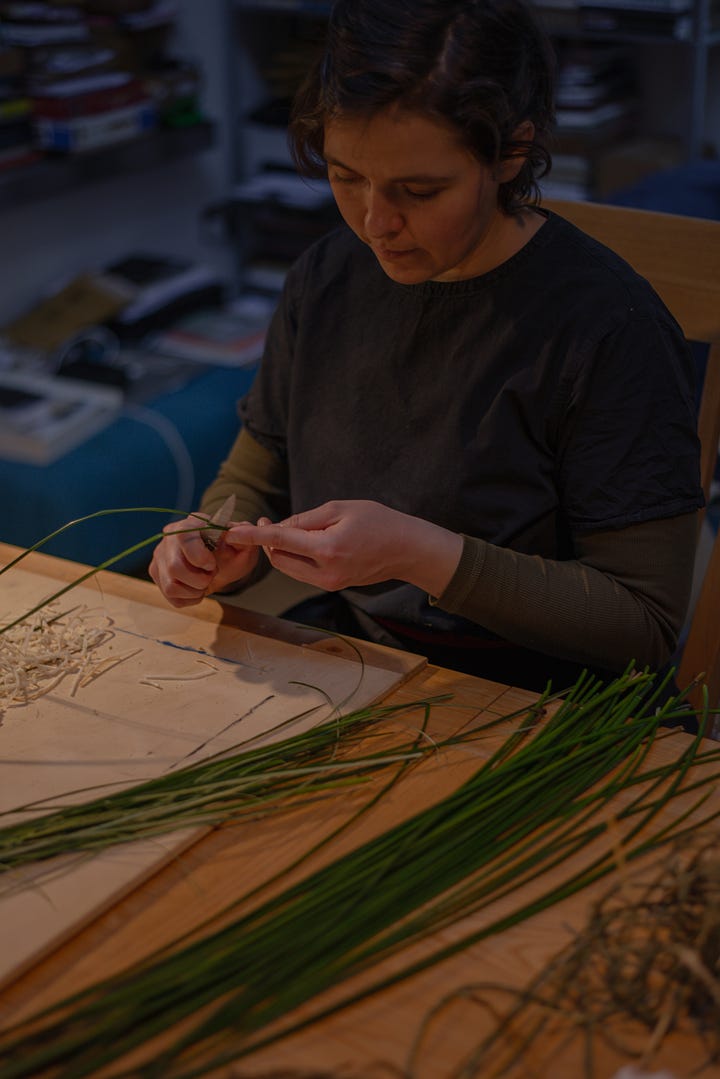
so, what do I do with the rushes?
I either dry the stems whole and use them whole or split them for a finer quality of cordage. I prefer to split them when they are freshly gathered, however, it is also possible to split the rush stems once they dried. I will show you the difference it makes. keep reading.
I am describing how I process these rushes in detail here, illustrating with photos.
I split the rushes lengthwise, one at a time with the blade of a knife by firmly pushing the sharp blade with one hand while holding the stem in my other hand. Please see the photo documentation of this process above and below.
if you split the hard rush stems when they are fresh they make a squeaky sound as the sponge and green outer layer is cut. I would recommend either splitting them when they are fresh or leave them for a few days or up to a week to fully dry. it is very difficult to split them when they are in-between and have wilted a bit.
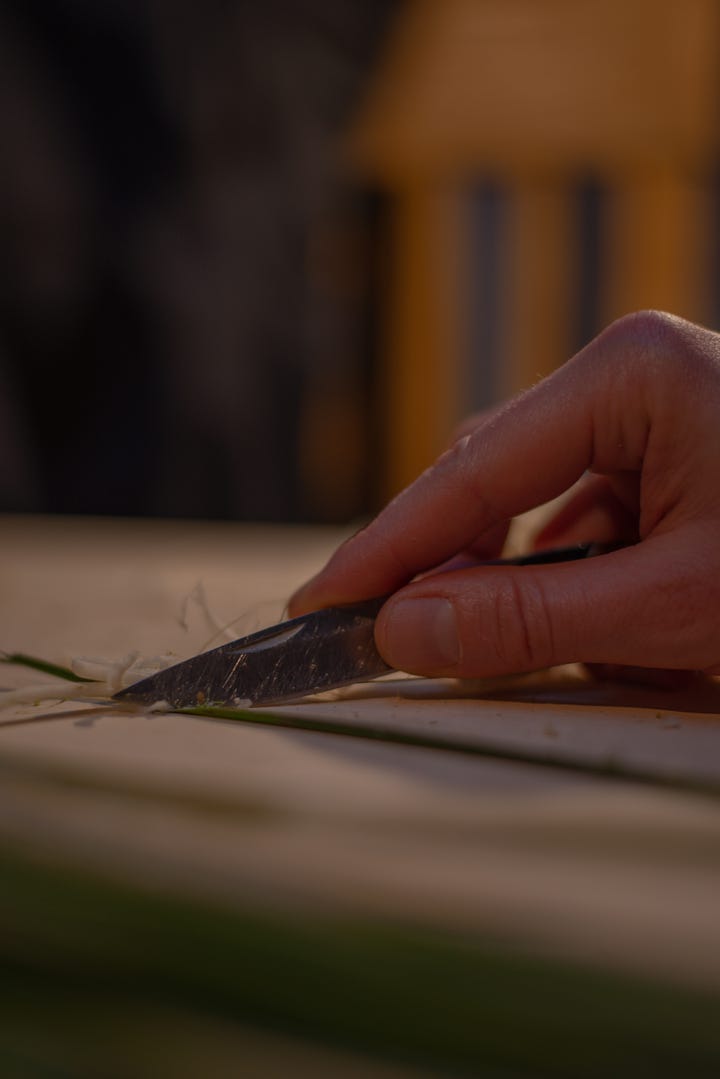
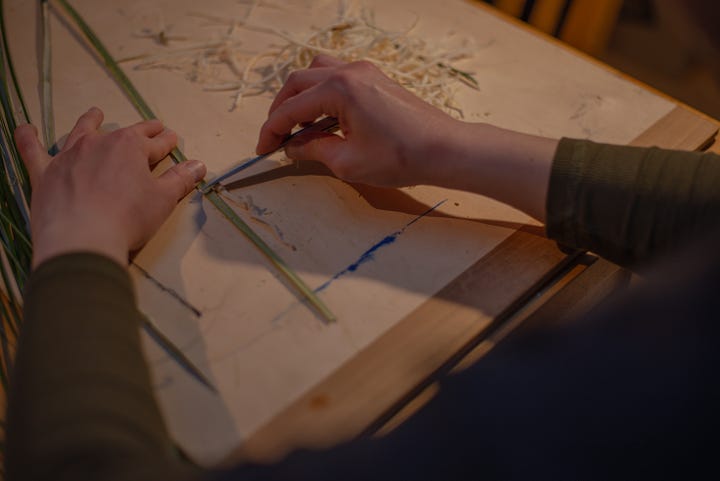
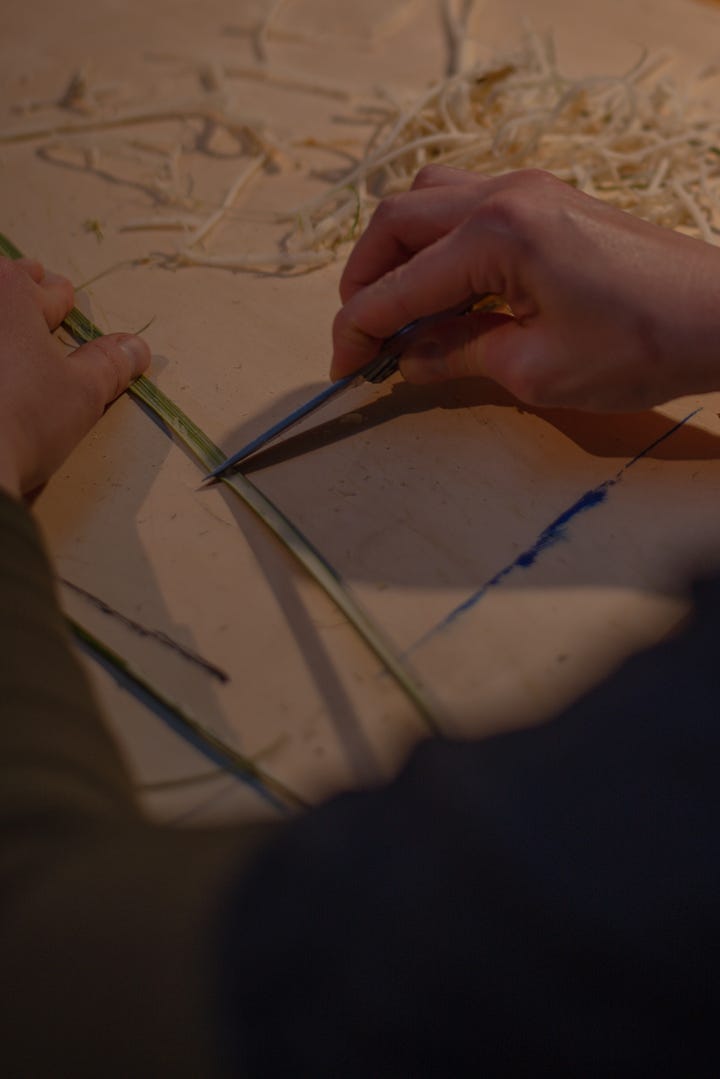
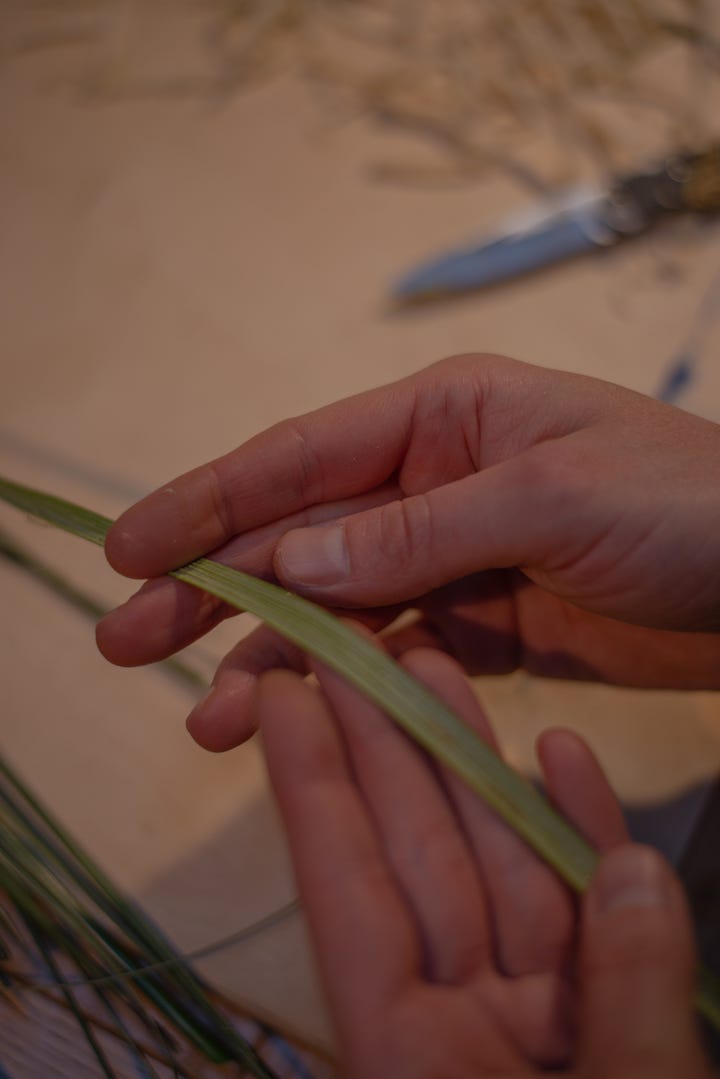
after splitting the stems I strip/scrape out the inner core. I found that I can get a finer quality of string when I use the outer green skin of the rush only, without the spongy inner parts. the fibres still remain strong and it is easy to join them (splice) together as I go and result in a more flexible cordage.
the sponge-like core is also great for firestarting too. (I use this dried as tinder) and this starchy inner fibre was even used as a thickener in stews (I have not tested this myself. before eating anything you forage, I advise you to learn about the plant to make sure it is edible.)
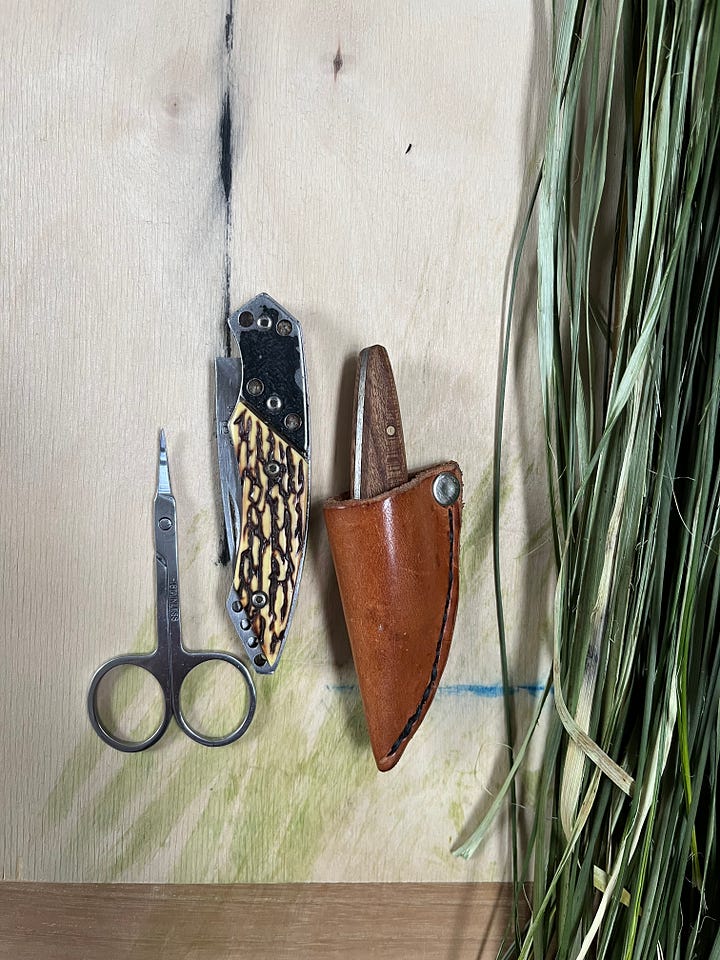
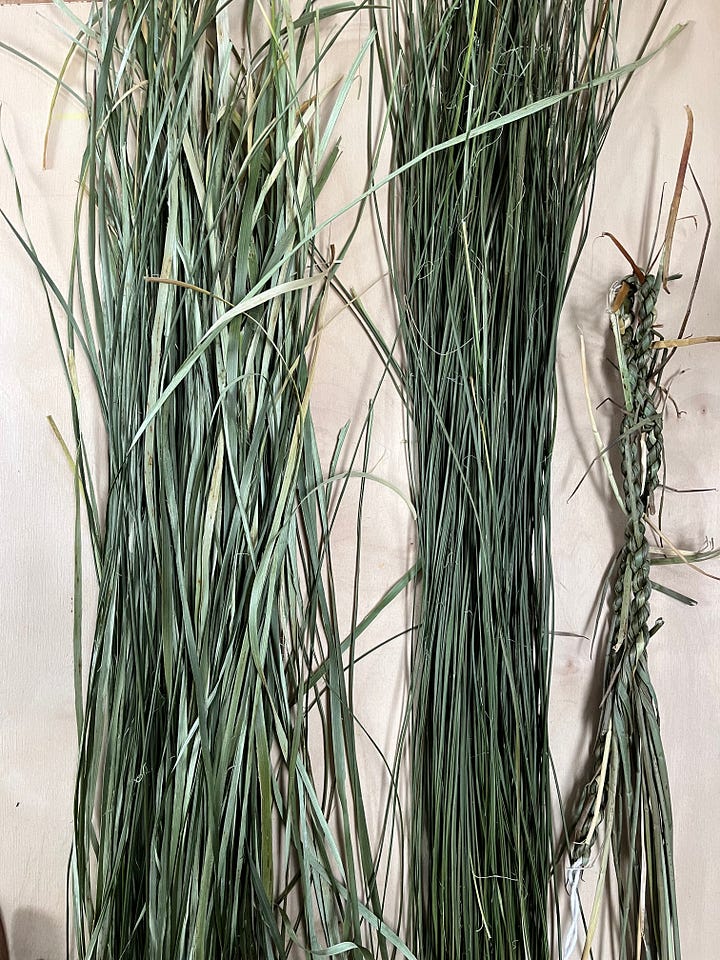
lastly, let the rushes dry fully before using them for cordage making. I do this, because once the plant fibres dry, you will notice they shrink considerably. then, once rehydrated (made wet and flexible) with water they will absorb the amount of water they need to become pliably and ready to use.
if you soak them in water, let them drip dry for an hour or so. alternatively, you can use a spray bottle and wrap them in a tea towel or sheet of fabric.
Do they need drying?
yes. I dry them or I split them first. I scrape their inner core out. I dry them longer.
I rehydrate them and then twist them into cordage.
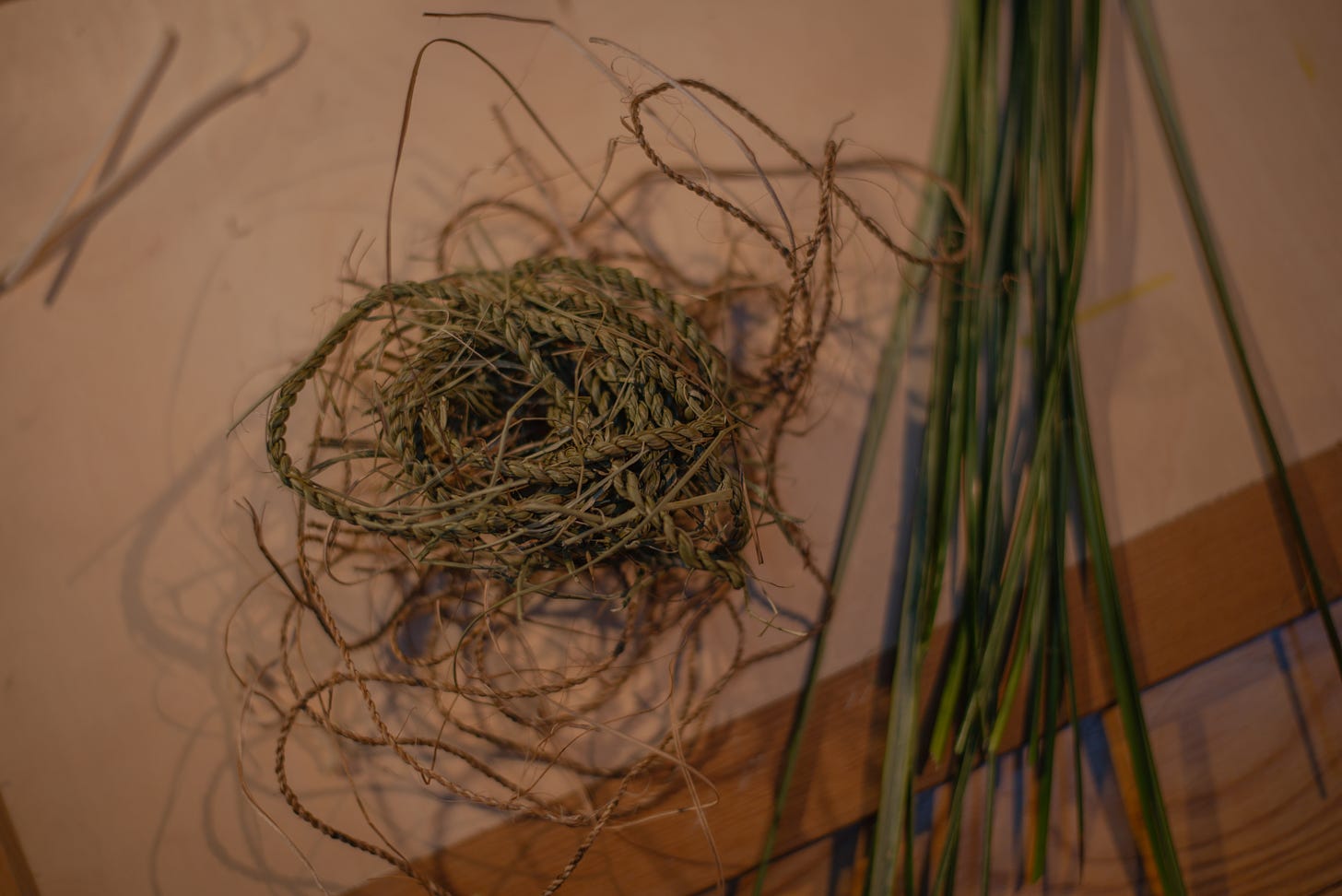
lastly, let me leave you with some words from a favourite book Ways of Seeing by John Berger that continues to inspire me and I would highly recommend reading if you haven’t yet.
‘Seeing comes before words.
It is seeing which establishes our place in the surrounding world; we explain that world with words, but words can never undo the fact that we are surrounded by it. The relationship between what we see and what we know is never settled.
The way we see things is affected by what we know or what we believe.
[It] is not a question of mechanically reacting to stimuli. We only see what we look at. To look is an act of choice. As a result of this act, what we see is brought within our reach. To touch something is to situate oneself in relation to it.’
observing is what allows me to see more. looking closely reveals more of the subject and paying attention to something in turn allows me to open wider to take more nuance of details in. I often wonder - is there an end to deepening awareness with my senses through observation? will I ever arrive to a place where nothing more reveals itself to me? observing is an enriching way of relating to the world around me and within me. I find it leading to an active engagement with what’s in front of me.
I invite you to observe the landscape around you and notice what is calling for your attention. this is one way to begin relating to the more-than-human world.
I will leave it there for now and intend to continue my Fibre Focus next week, with a different plant. thank you for patiently bearing with me as I figure the format of this newsletter on this platform. it is a new bud I’m putting out this spring, waiting to leaf and flower and grow throughout the year. if any of the above resonates with you, please consider subscribing and forwarding this to others who you think may benefit from its content.
Learning resources + other interesting highlights:
Field Studies Council has various courses to learn more about the ecology and conservation of Grasses, Sedges and Rushes. There are hundreds of species to distinguish and you can learn to identify.
Suzie Grieve at Foraged Fibres is a very knowledgeable lassie living in Cumbria who helped me a lot when I started working with fibres in my shed in Suffolk several years ago. I will always be grateful to her for her generosity to respond to me and willingness to assist me on my learning journey.
a wonderful blog about straw work and kishie making in the Shetlands: Weaving connections: straw, history and home
photo credit for many of the stunning photos I included above to Jacob Turnbull who came to document me and my work here in the Peak District in recent months for an upcoming publication and his ongoing research for his dissertation at Liverpool University. He invited me to be part of the extended edition of a book focusing on creative lives in the Hope Valley.



